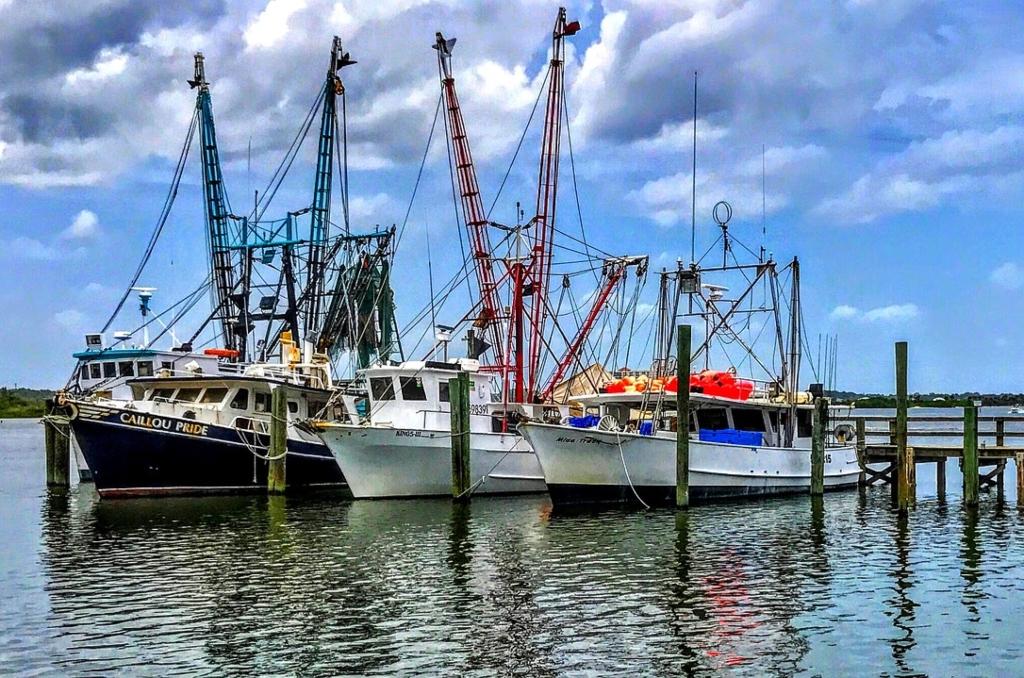Image by Matt O’Donnell from Pixabay
Seaports have not had much business since the COVID-19 pandemic.This is because Florida’s ports have been particularly shut down bringing the cruise and tourist industries to a halt. Furthermore, the decline in demand for steel and automobiles has added to the lack of port traffic.The American Association of Port Authorities and its state chapter, the Florida Ports Council (FPC), is among groups lobbying to secure relief for the nation’s maritime sector as part of the COVID-19 stimulus assistance package being debated by House Democrats and Senate Republicans this week in Washington, D.C.
Florida’s maritime industry has grown by 25 percent in less than a decade, according to a 2019 PricewaterhouseCoopers study. This has helped the state add nearly 14,000 jobs since 2011.
Senators on the Commerce, Science, & Transportation Committee urged faster action to offset the impacts of COVID-19 on the seafood industry. Committee Chairman Sen. Roger Wicker, R-Miss., noted that fisheries across the nation have experienced up to a 90 percent decline in sales. “All sectors of the seafood industry, including fishermen, aquaculture producers, seafood processor distributors and restaurants have been impacted,” Wicker said at Wednesday’s hearing. “These losses have crippled our nation’s fisheries and will have negative impacts on coastal communities across the country.”
More than 61,000 Florida companies export more than $6.5 billion in goods to more than 170 countries, creating 2.5 million indirect jobs while directly employing nearly 66,000 Floridians. Since the pandemic began, the Centers for Disease Control and Prevention (CDC) banned cruising from U.S. ports. The industry’s largest trade group, the Cruise Lines International Association (CLIA), implemented a voluntary “no sail” order from July through mid-September.
In the Gulf of Mexico alone, the price of fish decreased by 80 percent, Wicker said, and Gulf shrimp and oysters were hit the hardest. The Florida Department of Agriculture & Consumer Services issued 1,048 Commercial Aquaculture Certificates of Registration last year, and the Florida Fish and Wildlife currently has 8,282 active saltwater products licenses.
The CARES Act allocated $300 million for fisheries assistance funding in May. Florida received $23,447,815, according to the Atlantic States Marine Fisheries Commission. However, the National Oceanic and Atmospheric Administration (NOAA) has not approved the state’s plan.
The Southern Shrimp Alliance is urging the shrimp industry to complete a survey NOAA sent out to help gauge the economic and social impacts of the coronavirus. Shrimp from U.S. suppliers makes up 10 percent of the U.S. shrimp market, according to Long. The rest comes mainly from shrimp farms in India, Vietnam and China.
Spokeswoman Deborah Long said the issue with the CARES Act dates back to the beginning of the Paycheck Protection Program. Shrimp vessel captains could apply for the loans to help cover their crew’s paychecks. The fact that most American-consumed seafood is imported “should concern us,” Sen. Rick Scott, R-Naples, said at the hearing: “We clearly need to have a stable supply of seafood.”
Thanks to its long and flat peninsular shape, the Florida Straits and the Atlantic Ocean, Florida can boast a rich and color maritime history since the 1500s. Also because of its size, natural features like reefs, shoals, water depth, currents, locations of rivers and inlets and the weather, Florida has offered valuable resources to its residents. Florida’s climate has affected where people lived and where vessels wrecked. Florida has some of the best natural harbors in the country, resulting in the state becoming an international maritime crossroads.
Melissa’s career in writing started more than 20 years ago. Today, she lives in South Florida with her husband and two boys.

